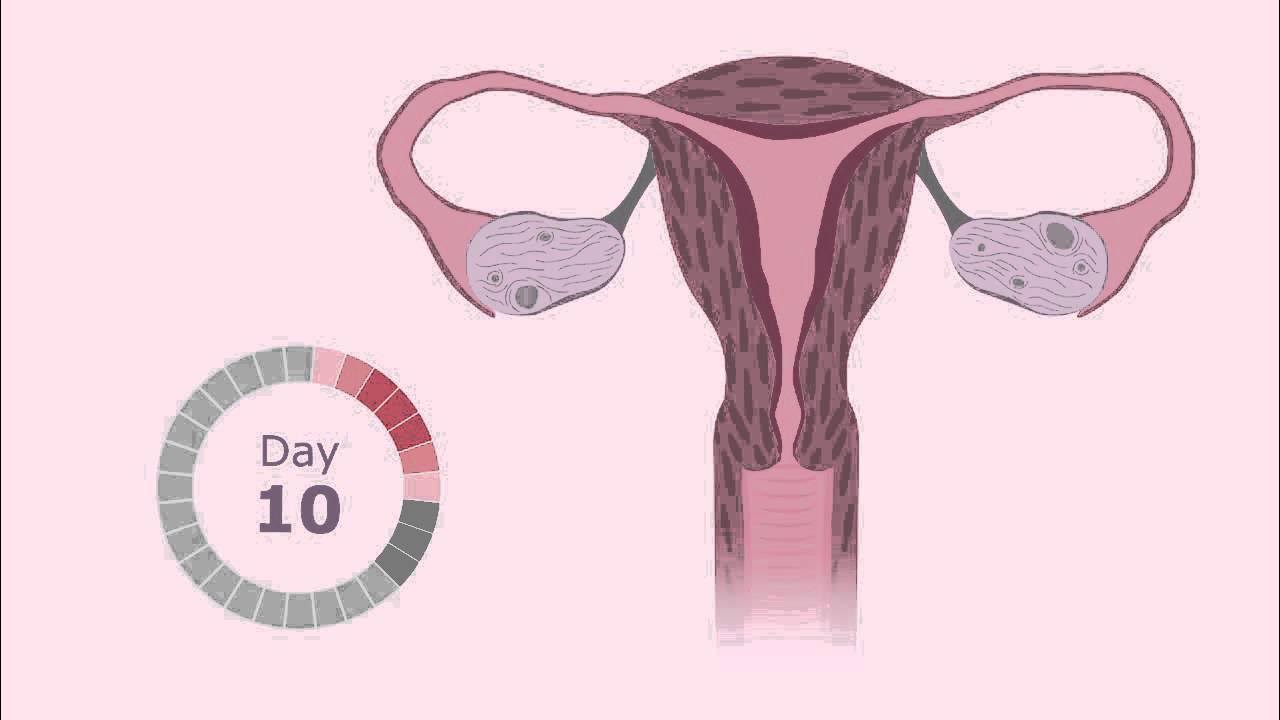Menstrual Cycle Basics | 3D animation (1/2)
Summary
TLDRThe menstrual cycle begins with menstruation, after which the uterine lining thickens in preparation for potential pregnancy. Around day 14, an egg is released from the ovaries and travels down the fallopian tubes to the uterus. If sperm are present, fertilization may occur. If not, the egg breaks down, and hormonal signals prompt the uterus to shed its lining, starting the cycle over. For a more detailed understanding of menstruation, watch the next video.
Takeaways
- 😀 The menstrual cycle begins with menstruation, marked by bleeding.
- 😀 After menstruation, the uterine lining becomes thicker in preparation for a potential pregnancy.
- 😀 Around day 14, an egg is ovulated and released from the ovaries.
- 😀 The egg travels down the fallopian tubes toward the uterus.
- 😀 Fertilization can occur if sperm are present in the fallopian tubes.
- 😀 If the egg is not fertilized, it breaks down.
- 😀 Hormonal changes trigger the uterus to shed its lining.
- 😀 The shedding of the uterine lining marks the return to day one of the menstrual cycle.
- 😀 The process of the menstrual cycle repeats itself monthly.
- 😀 Watch the next video for a more detailed explanation of menstruation.
Q & A
What is the first phase of the menstrual cycle?
-The first phase of the menstrual cycle is menstruation, which involves the shedding of the uterine lining.
What happens after menstruation ends?
-After menstruation ends, the uterine lining begins to thicken in preparation for the possibility of pregnancy.
When is the egg released during the menstrual cycle?
-The egg is typically released around day 14 of the menstrual cycle, during a process called ovulation.
What happens to the egg after it is released?
-After the egg is released, it travels down the fallopian tubes toward the uterus, where it may encounter sperm for fertilization.
Can fertilization occur outside the fallopian tube?
-No, fertilization occurs in the fallopian tube when sperm meets the egg.
What happens if fertilization does not occur?
-If fertilization does not occur, the egg breaks down and hormonal changes signal the uterus to prepare to shed its lining.
How does the menstrual cycle reset after ovulation?
-After ovulation and if fertilization does not happen, the cycle resets by the shedding of the uterine lining, starting a new cycle from day one.
How long does the typical menstrual cycle last?
-The typical menstrual cycle lasts about 28 days, though it can vary slightly from person to person.
What hormonal changes happen after ovulation?
-After ovulation, hormonal changes trigger the uterine lining to either prepare for implantation or shed if pregnancy doesn't occur.
What is the role of the uterine lining in the menstrual cycle?
-The uterine lining thickens to support a potential pregnancy and sheds if no fertilization occurs, restarting the cycle.
Outlines

Esta sección está disponible solo para usuarios con suscripción. Por favor, mejora tu plan para acceder a esta parte.
Mejorar ahoraMindmap

Esta sección está disponible solo para usuarios con suscripción. Por favor, mejora tu plan para acceder a esta parte.
Mejorar ahoraKeywords

Esta sección está disponible solo para usuarios con suscripción. Por favor, mejora tu plan para acceder a esta parte.
Mejorar ahoraHighlights

Esta sección está disponible solo para usuarios con suscripción. Por favor, mejora tu plan para acceder a esta parte.
Mejorar ahoraTranscripts

Esta sección está disponible solo para usuarios con suscripción. Por favor, mejora tu plan para acceder a esta parte.
Mejorar ahoraVer Más Videos Relacionados

Menstrual Cycle Phases Nursing | Follicular Phase & Luteal Phase Med Surg

The Menstrual Cycle - GCSE Biology (9-1)

The Menstrual Cycle

Fisiologi Hormon Siklus Mensturasi - FSH, Estrogen, LH, Progesteron

The Menstrual Cycle | 3D Animation (2/2)

Reproductive cycle graph - Luteal phase | NCLEX-RN | Khan Academy
5.0 / 5 (0 votes)
